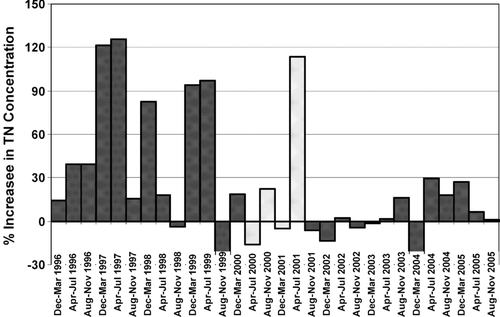Figures & data
Figure 1 Location of Lake George and the St. Johns River within northeastern Florida. The river flows north and enters the Atlantic Ocean near the Florida-Georgia border.
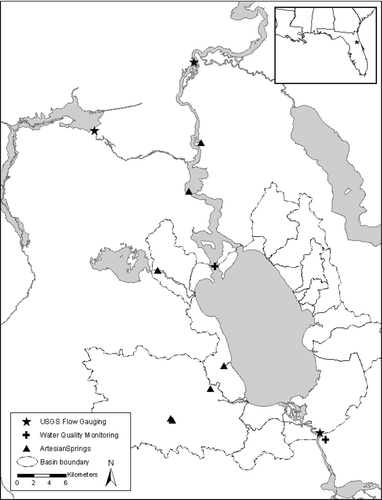
Table 1 Ambient nutrient concentrations and ratios at Lake George (LG) during bioassays. Nutrient concentrations are μ M. Samples that were below the detection limit are indicated by BD. The limits of detection were 0.26 μ M for NO3 − + NO2 −, 0.31 μ M for NH4 + and 0.02 μ M for PO4 −3.
Table 2 Flow rate and nitrogen and phosphorus form concentrations for major inputs to Lake George, 1996–2005.
Table 3 Microscopic counts of natural units (filaments) of dominant cyanobacteria in each of the experiments.
Figure 2 Primary productivity measurements following the 96-hr bioassay incubations. Treatments include the unamended control, nitrogen addition (N), phosphorus addition (P) and nitrogen and phosphorus addition (NP). Bars are the mean of five replicates, error bars are one standard deviation, and the lower case letters group the means according the Bonferroni post-hoc comparison.
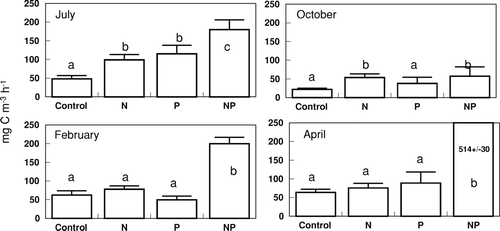
Figure 3 Chlorophyll a measurements following the 96-hr bioassay incubations. Treatments include the unamended control, nitrogen addition (N), phosphorus addition (P) and nitrogen and phosphorus addition (NP). Bars are the mean of five replicates, error bars are one standard deviation, and the lower case letters group the means according the Bonferroni post-hoc comparison.
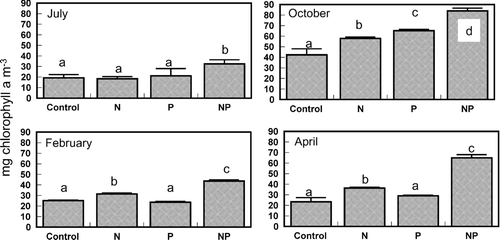
Figure 4 Acetylene reduction measurements following the 96-hr bioassay incubations. Treatments include the unamended control, nitrogen addition (N), phosphorus addition (P) and nitrogen and phosphorus addition (NP). Bars are the mean of five replicates, error bars are one standard deviation, and the lower case letters group the means according the Bonferroni post-hoc comparison. Acetylene reduction was not detected in February, as indicated by the ND notation.
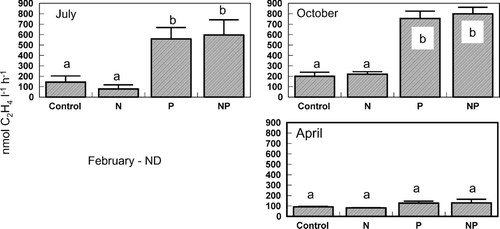
Figure 5 Taxonomic composition of the phytoplankton following the 96-hr bioassay incubations. HPLC measurements of diagnostic pigments were used to partition the total Chlorophyll a into taxonomic groups. Treatments include the unamended control (C), nitrogen addition (N), phosphorus addition (P) and nitrogen and phosphorus addition (NP). Bars are the mean of five replicates and represent the percentage of the phytoplankton community that was in each taxonomic group.

Table 4 Microscopic counts of taxonomic groups in each of the experiments. Cells belonging to Dinophyceae, Euglenophyceae, and Chrysophyceae were also detected at times but at much lower abundances than the groups shown.
Table 5 Species richness values for each treatment at the end of each experiment.
Figure 6 Seasonal volume replacement for Lake George. Seasons are Dec–Mar, Apr–Jul, and Aug–Nov and conform generally to an annual pattern of cold-wet, hot-dry, and hot-wet. Upper St. Johns discharge obtained from USGS gauge 02236125, the St. Johns River at Astor. Artesian spring flow was determined by CitationStewart et al. (2006). Wet deposition was determined by Thiessen polygon from local rain gauges.
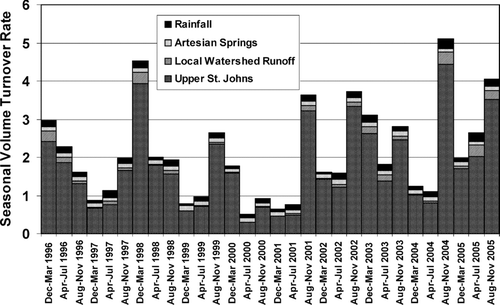
Figure 7 Percent change in Lake George outlet total nitrogen over volume-weighted inflow concentrations from 1996 through 2005. Lighter-dotted bars indicate investigation duration. Volume-weighting adjusted in-lake concentration based on fractions of volume added by major sources, and corrected for evapo-concentration.
